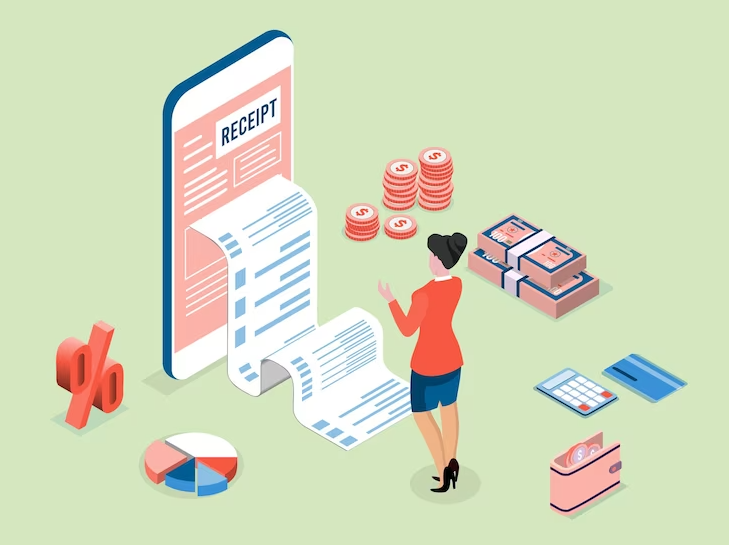Are you tired of drowning in piles of receipts and struggling to keep track of your expenses? Well, say goodbye to the hassle and hello to a streamlined bookkeeping process with OCR integration! This revolutionary technology is changing the game for small business owners by simplifying receipt management like never before. In this blog post, we’ll explore exactly how OCR works and why it’s a game-changer for your business. Get ready to simplify your life – let’s dive in!
Introduction: Streamlining Bookkeeping with OCR Integration
As a business owner, you have enough to worry about without having to keep meticulous records of every expense. And yet, knowing where your money is going is crucial to the success of your business. That’s why streamlining your bookkeeping process with OCR integration is such a valuable tool.
OCR stands for optical character recognition. In layman’s terms, this means that OCR technology can take a picture of a document, like a receipt, and convert it into text that can be stored in a database. This is an incredibly powerful tool for bookkeeping because it means that you no longer have to rely on paper receipts and manually inputting data.
OCR integration can save you time and money by automating the process of collecting and organizing your expenses. It also makes it easier to track spending so that you can make better decisions about where to allocate your resources. OCR integration is a game-changer for business owners who want to take control of their finances.
What Is OCR?
In simple terms, OCR is a technology that allows you to convert scanned images of text into machine-readable text. This means that you can take a physical document, like a receipt or invoice, and convert it into a digital file that can be read and processed by your bookkeeping software.
This can be incredibly helpful for small businesses since it can streamline the bookkeeping process and make it easier to track expenses. For example, if you’re using a paper system for tracking receipts, you would need to manually enter the data from each receipt into your software. With receipt OCR integration, you can simply scan the receipt, and the data will be automatically entered into your software.
OCR technology is constantly improving, and there are now several different applications that offer OCR integration. This means that you can find an application that fits your specific business needs. Whether you’re looking for a simple way to scan receipts or want something more robust that can handle other types of documents, there’s an OCR solution out there for you.
Benefits of Using OCR Integration for Receipts
If you’re like most people, you probably don’t relish the idea of having to save and organize all of your physical receipts. However, if you’re self-employed or have a small business, it’s essential to stay on top of your expenses and ensure that you get every deduction you’re entitled to come tax time.
One way to make the task of managing your receipts a little easier is to use optical character recognition (OCR) integration. OCR is a technology that allows you to convert images of text into digital text that can be edited, searched, and stored more easily.
There are a number of benefits of using OCR integration for receipts, including:
- Increased Efficiency: With OCR integration, you can quickly and easily scan and digitize your receipts so that they’re stored securely and conveniently in one place. This can save you a lot of time compared to manually inputting data from each receipt.
- Improved Accuracy: OCR can help reduce errors when inputting data from receipts into your accounting software. This is because the technology reads and converts the text on the receipt directly into digital form rather than relying on human interpretation, which can sometimes be inaccurate.
- Greater flexibility: Once your receipts are digitized using OCR, you can access them from anywhere and at any time using any internet-connected device. This means you can keep track of your expenses even when you’re on the go!
Challenges in Using OCR Technology for Receipt Creation and Management
As businesses move toward more paperless operations, they are increasingly relying on OCR technology to create and manage receipts. However, there are several challenges that can make using OCR technology for receipt management difficult.
One challenge is that OCR technology is not perfect. While it has come a long way in recent years, it still sometimes has trouble accurately reading text, especially if the text is small or faded. This can lead to errors in the resulting receipts, which can be frustrating for both businesses and customers.
Another challenge is that OCR technology requires a fair amount of processing power. This can be an issue for businesses with limited resources, such as small businesses or startups. It can also be an issue for businesses that process a large volume of receipts, as the processing power required can quickly add up.
OCR technology can be expensive. While the cost has come down in recent years, it is still often out of reach for smaller businesses or those with limited budgets. This can make it difficult to justify the investment, especially if there are cheaper alternatives available.
Tips to Get You Started with OCR Integration
If you’re thinking about integrating OCR into your bookkeeping process, here are a few tips to get you started:
- Define Your Use Case
The first step is to clearly define your use case for OCR integration. What specific problem are you trying to solve? This will help you determine which OCR solution is best for your needs.
- Do Your Research
Once you’ve defined your use case, it’s time to do some research. There are a number of different OCR solutions on the market, so it’s important to find one that fits your specific needs. Read online reviews, talk to other businesses that have used OCR, and get quotes from different providers before making a decision.
- Implement a Test Run
Before fully integrating OCR into your bookkeeping process, it’s always a good idea to do a test run. This will help you iron out any kinks and make sure the solution works for your specific needs. Once you’ve successfully completed a test run, you can roll out the integration across your entire business.
Examples of Companies that Use OCR Solutions for Bookkeeping Processes
There are many companies out there that are using OCR solutions for bookkeeping processes. Some of these companies include:
- Walmart – Walmart uses an OCR solution to automatically process and record receipts for their customers. This helps to speed up the bookkeeping process and makes it more accurate.
- Amazon – Amazon also uses an OCR solution for their receipt management. This helps them to keep track of customer purchases and ensure accuracy in their bookkeeping.
- Google – Google has been using OCR technology for a while now to help with their bookkeeping needs. They use it to scan and store receipts, invoices, and other important documents.
- Apple – Apple uses OCR solutions to automatically record and store receipts from iTunes and the App Store. This allows them to keep track of customer spending and improve their bookkeeping accuracy.
- Microsoft – Microsoft uses an OCR solution to automatically process and store receipts from their online stores. This helps them to keep track of customer spending and improve their accuracy in bookkeeping.
Conclusion
If your bookkeeping processes are manual and paper-based, it’s time for a change. Introducing OCR integrations into your workflow can help you manage receipts and expenses more efficiently – saving you time and money.
OCR stands for Optical Character Recognition. It’s a technology that allows you to convert scanned images of text into editable, digital text. This is useful for bookkeeping because it means you can scan paper receipts and invoices, and the OCR software will extract the relevant information automatically.

